Potrebujeme váš súhlas na využitie jednotlivých dát, aby sa vám okrem iného mohli ukazovať informácie týkajúce sa vašich záujmov. Súhlas udelíte kliknutím na tlačidlo „OK“.
ASTM D7709-12
Standard Test Methods for Measuring Water Vapor Transmission Rate (WVTR) of Pharmaceutical Bottles and Blisters
Automaticky preložený názov:
Štandardné skúšobné metódy pre meranie priepustnosť pre vodnú paru (WVTR) farmaceutických fliaš a pľuzgierom
NORMA vydaná dňa 1.5.2012
Informácie o norme:
Označenie normy: ASTM D7709-12
Poznámka: NEPLATNÁ
Dátum vydania normy: 1.5.2012
Kód tovaru: NS-38992
Počet strán: 7
Približná hmotnosť: 21 g (0.05 libier)
Krajina: Americká technická norma
Kategória: Technické normy ASTM
Kategórie - podobné normy:
Anotácia textu normy ASTM D7709-12 :
Keywords:
barrier, blister, bottle, gravimetric, package, water vapor, permeation, steady state, Bottles, Permeation, Water vapor, Water vapor transmission (WVT), ICS Number Code 11.120.99 (Other standards related to pharmaceutics)
Doplňujúce informácie
| Significance and Use | ||
|
The purpose of these test methods is to obtain reliable values for WVTR that can be used to discriminate among barrier packages for pharmaceutical products. These test methods will establish a WVTR value that represents the water vapor transmission of the container closure system being evaluated. They are intended for use in evaluating or comparing, or both, the water vapor barrier performance of alternative packages for use in packaging of pharmaceutical products. While these methods were developed for a specific, limited application, they should be suitable for most types and sizes of consumer packages. |
||
| 1. Scope | ||
|
1.1 The three test methods described herein are for measurement of water vapor transmission rates (WVTRs) of high-barrier multiple-unit containers (bottles), high-barrier single-unit containers (blisters), and quasi-barrier single-unit containers used for packaging pharmaceutical products. The containers are tested closed and sealed. These test methods can be used for all consumer-sized primary containers and bulk primary containers of a size limited only by the dimensions of the equipment and the weighing capacity and sensitivity of the balance. 1.2 These test methods are intended to be of sufficient sensitivity and precision to allow clear discrimination among the levels of barrier packages currently available for pharmaceutical products. 1.3 There are three methods: Method A is for bottles, Method B is for formed barrier blisters, and Method C is for formed quasi-barrier blisters. Methods B and C can be adapted for use with flexible pouches. 1.4 These test methods use gravimetric measurement to determine the rate of weight gain as a result of water vapor transmission into the package and subsequent uptake by a desiccant enclosed within the package. The packages are exposed to environments typical of those used for accelerated stability testing of drug products in the package (typically 40°C/75 % relative humidity [RH]). 1.5 For these methods, balance sensitivity, amount of desiccant, number of blisters per test unit, and weighing frequency were developed in an experiment based on Test Methods E96/E96M. 1.6 Test Methods E96/E96M gives specific instruction on the interactions among weighing frequency, number of data points necessary to establish steady state, minimum weight gain in a weighing period, and balance sensitivity. 1.7 The test methods in this standard were developed specifically for pharmaceutical bottles and blisters as closed container-closure systems. The experiment from which the methods were developed provided an inter-laboratory study from which the precision and bias statement was written. The packages in the study were small bottles and blisters used regularly for pharmaceutical solid oral dosage forms. 1.8 In spite of the specific nature of their application, the test methods in this standard should be suitable for other pharmaceutical packages and most types and sizes of other consumer packages. 1.9 The values stated in SI units are to be regarded as the standard. No other units of measurement are included in this standard. The units of measure for bottles are milligrams per bottle per day (mg/bottle-day) and for blisters, milligrams per blister cavity per day (mg/cavity-day). These units may be used for both standard and referee testing. 1.10 This standard does not purport to address all of the safety concerns, if any, associated with its use. It is the responsibility of the user of this standard to establish appropriate safety and health practices and determine the applicability of regulatory limitations prior to use. |
||
| 2. Referenced Documents | ||
|
Podobné normy:
Historická
1.10.2008
Historická
1.4.2011
Historická
1.3.2011
Historická
1.3.2011
Historická
1.4.2011
Historická
1.10.2010
Odporúčame:
Aktualizácia technických noriem
Chcete mať istotu, že používate len platné technické normy?
Ponúkame Vám riešenie, ktoré Vám zaistí mesačný prehľad o aktuálnosti noriem, ktoré používate.
Chcete vedieť viac informácií ? Pozrite sa na túto stránku.



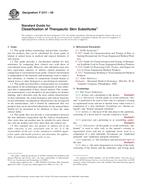 ASTM F2311-08
ASTM F2311-08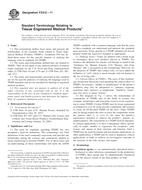 ASTM F2312-11
ASTM F2312-11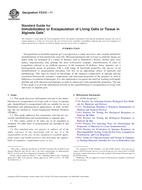 ASTM F2315-11
ASTM F2315-11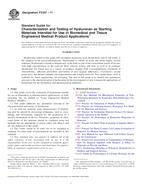 ASTM F2347-11
ASTM F2347-11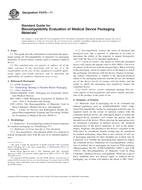 ASTM F2475-11
ASTM F2475-11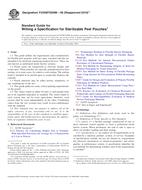 ASTM F2559/F2559M-06..
ASTM F2559/F2559M-06..
 Cookies
Cookies
